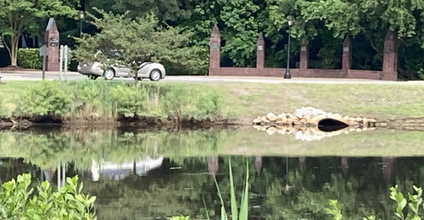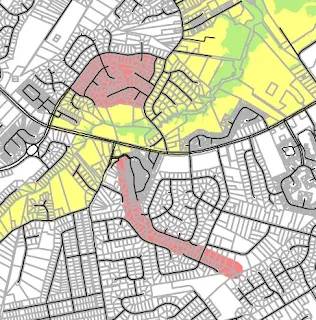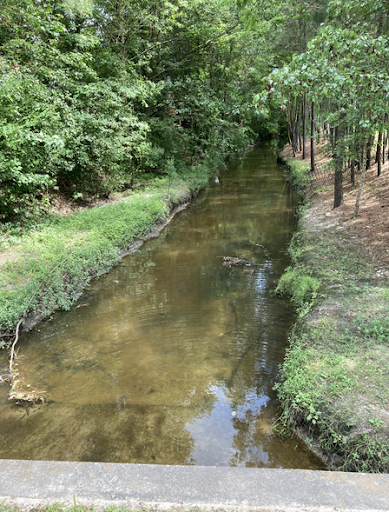In this edition
- Green Drinks Chesapeake - Wednesday, June 26
- Proposed changes to Chesapeake Bay Preservation Area in Chesapeake
- Comp Plan Open Houses
- City Council Meeting - June 11 (Single Member Voting Districts & Recycling Referendums)
- June Planning Commission Meeting - June 12
- Agricultural Subdivision Ordinance
- Action Alerts
- More Upcoming Events
- In the News
Green Drinks Chesapeake - Wednesday, June 26
Our next meeting will be Wednesday, June 26, 2024 from 6 pm to 8 pm at YNot Italian in Greenbrier, 1036 Volvo Parkway, Suite 7 Chesapeake, VA, 23320.
Among other topics we'll discuss drafting a sign-on letter to the City Council about Planning Documents that are being prepared, including the Greenbrier Area Plan and the Trails and Connectivity Plan.
Please note the day change to Wednesday. The City Council meeting on Tuesday the 25th will be considering the proposed CBPA changes, so we wanted to keep that day clear to attend the City Council meeting. There have been several City Council meetings of interest on the 4th Tuesday in recent months, so we will consider moving the Green Drinks to the 4th Wednesday permanently.
What is Green Drinks? Green Drinks is mostly for people working on environmental issues, but anyone can come -- people from environment groups, business, government, academia, and as individuals. There is no 'us and them'. Green Drinks is a chance to mingle, share insights, inspire and delight each other. Come out and order some food or a drink (each participant pays for their own drinks and food; if drinking, please do so responsibly!) and join the conversation. Please do share the invite with others who may be interested.
Proposed changes to Chesapeake Bay Preservation Area in Chesapeake
 |
| Areas affected in Fernwood Farms/Riverwalk |
On Friday, May 31st, several of us met with the Planning Department to discuss the proposed CBPA District boundary changes in Chesapeake. In attendance were representatives from the Friends of Indian River, Fernwood Farms Civic League, and the Chesapeake Bay Foundation. Representatives from Wetlands Watch wanted to attend the meeting but were unavoidably unavailable that day.
The Planning Department provided an informative briefing on the process they followed for the CBPA changes. We discussed multiple areas of concern and the Planning Department said they would address these areas.
The removal of the forested wetlands by Fernwood Farms continues to be one of our areas of greatest concern, but not the only area. Read more on the items we asked the City to address at http://www.greeningchesapeake.com/2024/06/cbpa-update.html
The CBPA changes are scheduled to go back to City Council for decision on Tuesday, June 25.
Comp Plan Open Houses
The Greenbrier Area Plan Open House was on May 22. The charts presented can be seen at https://www.cityofchesapeake.net/3100/Greenbrier-Area-Plan.
The Trails and Connectivity Plan Open House was on June 3. The charts presented will be posted soon at https://www.cityofchesapeake.net/3233/Chesapeake-Trails-and-Connectivity-Plan
Comments on these plans can be sent to planning@cityofchesapeake.net
The Planning Department is continuing with the next round of public Community Open Houses. Upcoming meetings include:
- June 10 from 5:00 - 6:30 p.m., Chesapeake Conference Center
- June 13 from 5:00 - 6:30 p.m., Fire Station #7, 3329 South Battlefield Blvd.
- June 17 from 5:00 - 6:30 p.m., Chesapeake Lifestyle Center
See https://www.cityofchesapeake.net/3275/Comprehensive-Plan-Update for more info
City Council Meeting - June 11
The City Council is anticipated to draw an exceptionally large crowd to City Hall at their June 11th meeting due to items related to elections and recycling on the agenda. There are two resolutions at the top of the agenda that, if passed by the City Council, would authorize and direct the city attorney to petition the Circuit Court to call advisory referendums on
- "a proposed charter amendment to establish eight single-member voting districts for the election of council members, rather than an at large election without regard to residency, with the Mayor continuing to be elected at large."
- "a proposed ordinance imposing a fee to establish a curbside recycling program."
Anyone wishing to address City Council during the meeting must register with the City Clerk’s Office prior to the 6:30 p.m., start of the meeting on June 11. Speakers may register by calling the Clerk’s Office at (757) 382-6151 any weekday between 8:30 a.m. and 4:30 p.m. Speakers may also register in-person prior to the meeting on June 11; however, given the anticipated crowd, pre-registration is recommended to ensure your opportunity to speak.
Those who pre-register will still need to check-in prior to the meeting, in order to confirm attendance. A check in location will be provided just outside of the Chambers. See the full agenda and rules for the meeting at
Regular City Council Meeting, Jun 11, 2024June Planning Commission Meeting
- June 12 - Planning Commission Meeting Agendas (cityofchesapeake.net). Items of interest on agenda:
- Springton at Grassfield, a 172.5 acre Planned Unit Development along Dominion Blvd. Most of this land is cleared agricultural land or fallow; it would add 1200 homes - 720 multi-family homes, 455 townhomes, 176 single family homes; it would ultimately add about 25 acres of tree canopy.
- McGhee’s Concrete on Bainbridge Blvd
- An apartment/condo complex at the south terminus of Kingsborough Square, i.e. behind the Food Lion off Battlefield. This would clear about 6 acres of woods, with only about 1.5 acres of trees replanted.
- A YMCA Athletic Field in Great Bridge just off the end of Etheridge Manor Blvd. This would clear about 8 acres of trees.
Agricultural Subdivision Ordinance
On Wednesday, May 22, the Planning Commission recommended Approval of a proposed ordinance change (Version A) to change the way Agricultural subdivision happen to prevent unplanned "by right" development in rural areas. It changes the process that currently allows agricultural land divisions for the intention of agricultural use, but which have been used as a development tool to create numerous single-family dwelling properties instead of bona fide agricultural land use. The proposed Ordinance amendment would require a preservation easement on property being so subdivided to provide a mechanism of enforcement to ensure these parcels are used as originally proposed by the land owner. The ordinance next goes to the City Council, likely in June; date TBD. See the details on the proposed ordinance at PLN-TXT-2023-013----Ag-Text-Amendment-PDF (cityofchesapeake.net)
Action Alerts
More Upcoming Events
In the News














.png)






